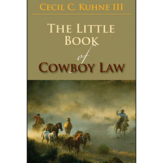I’m a day late for Throwback Thursday, but in the spirit of thinking about the past, here are some events from this week in legal history, along with some sources for legal history research. Fair warning: this is the kind of research it’s easy to lose a whole day on just because it’s really interesting.
This Week in Legal History

March 6, 1857: The U.S. Supreme Court’s opinion in Dred Scott v. Sanford issued, holding that because Scott was black, he was not a citizen and could not sue for his freedom. The case also held unconstitutional the Missouri Compromise, which restricted slave ownership in certain territories.
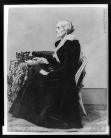 March 8, 1884: Susan B. Anthony testified in the U.S. House Judiciary Committee for the women’s suffrage and 19th Amendment.
March 8, 1884: Susan B. Anthony testified in the U.S. House Judiciary Committee for the women’s suffrage and 19th Amendment.

March 9, 1841: Amistad slave ship case decided by the U.S. Supreme Court.
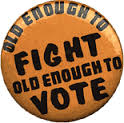 March 10, 1971: Senate approves 26th Amendment to lower voting age from 21 to 18.
March 10, 1971: Senate approves 26th Amendment to lower voting age from 21 to 18.
For more legal history events, see Jurist’s This Day at Law and Findlaw’s Today in Legal History.
Legal History Research
American Memory Project: “American Memory provides free and open access through the Internet to written and spoken words, sound recordings, still and moving images, prints, maps, and sheet music that document the American experience. It is a digital record of American history and creativity. These materials, from the collections of the Library of Congress and other institutions, chronicle historical events, people, places, and ideas that continue to shape America, serving the public as a resource for education and lifelong learning.” Many of these collections chronicle the history of legal issues and cases. For example, the Slaves and the Courts, 1740-1860 contains materials about the Dred Scott case, noted above. Note that the Library of Congress is in the process of migrating the collections to a new digital collections platform and the legal materials are currently split between the platforms.
Famous Trials: This is an incredible collection of documents, images, testimony, timelines, news coverage, etc. of famous trials going back to the trial of Socrates in 399 B.C. This comprehensive collection is the work of Prof. Douglas O. Linder from UMKC School of Law. This collection includes materials on the trial and conviction of Susan B. Anthony for illegal voting, 13 years before her historic testimony before the Judiciary Committee, noted above.
Hein Legal Classics: The Legal Classics library on HeinOnline contains 6700+ historical law books, including books written by legal scholars like Joseph Story, Jeremy Bentham, William Blackstone, William Holdsworth, Henry Maine, Federick William Maitland, Frederick Pollock, and Benjamin E. Cardozo. The collection includes works dating as far back as pre-1700. HeinOnline is available to University of Montana students and faculty through the Law Library Databases web page.
Making of Modern Law, Legal Treatises 1800-1926: This digital collection includes casebooks, local practice manuals, form books, works for lay readers, pamphlets, letters and speeches that make it an invaluable research tool for 19th Century Anglo-American law. This database is also available to University of Montana students and faculty through the Law Library Databases web page. Other Making of Modern Law collections not available on the UM campus cover primary sources from 1620-1970, trials from 1600-1926, and U.S. Supreme Court records and briefs from 1832-1978.
Eighteenth Century Collections Online: 18th Century Collections Online is a database of full-text works published in England in the 18th century. The full collection is multidisciplinary and covers all academic topics, including almost 10,000 legal titles. This database is also available to University of Montana students and faculty through the Law Library Databases web page.
Legal History on the Web: Compiled by the Triangle Legal History Seminar, this is a comprehensive portal to everything legal history on the internet. In addition to a plethora of research sites, this site also links to scholarship, prizes, and jobs in legal history.
ABA Journal Precedents: ABA Journal’s Precedents feature highlights photographs of some of the most famous events in American law. Each month, the last page of the journal contains a summary and photographs. The Precedents feature is available online on the journals’ website.
Montana’s Early Women Lawyers: And for something local, Prof. Bari Burke’s blog provides insight into the history of women lawyers in Montana, and by extension, early women lawyers across the United States. For more information about this blog, see our earlier blog post, There’s a New Blog in Town.

 mmunity linked directly to the cases they are discussing. This provides context and gives life to the text of the case that you are researching.
mmunity linked directly to the cases they are discussing. This provides context and gives life to the text of the case that you are researching. kind of analysis into
kind of analysis into 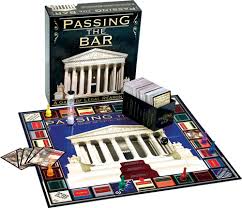


 Law Stack
Law Stack



 Libraries are not just central to a college campus, they are central to society. Some of the most beautiful spaces in the world are libraries, and there are many
Libraries are not just central to a college campus, they are central to society. Some of the most beautiful spaces in the world are libraries, and there are many 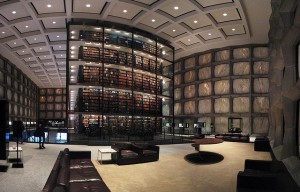



 The Law Book: From Hammurabi to the International Criminal Court, 250 Milestones in the History of Law.
The Law Book: From Hammurabi to the International Criminal Court, 250 Milestones in the History of Law. 